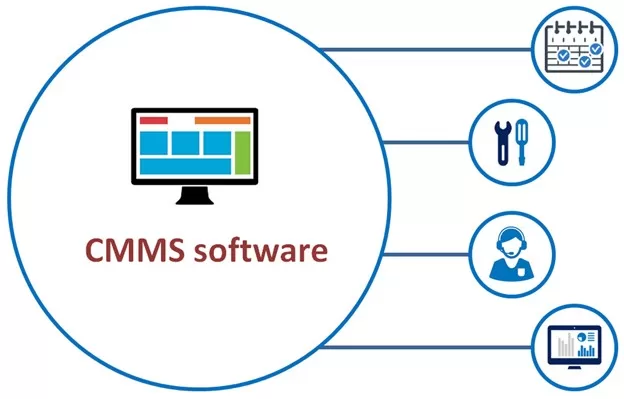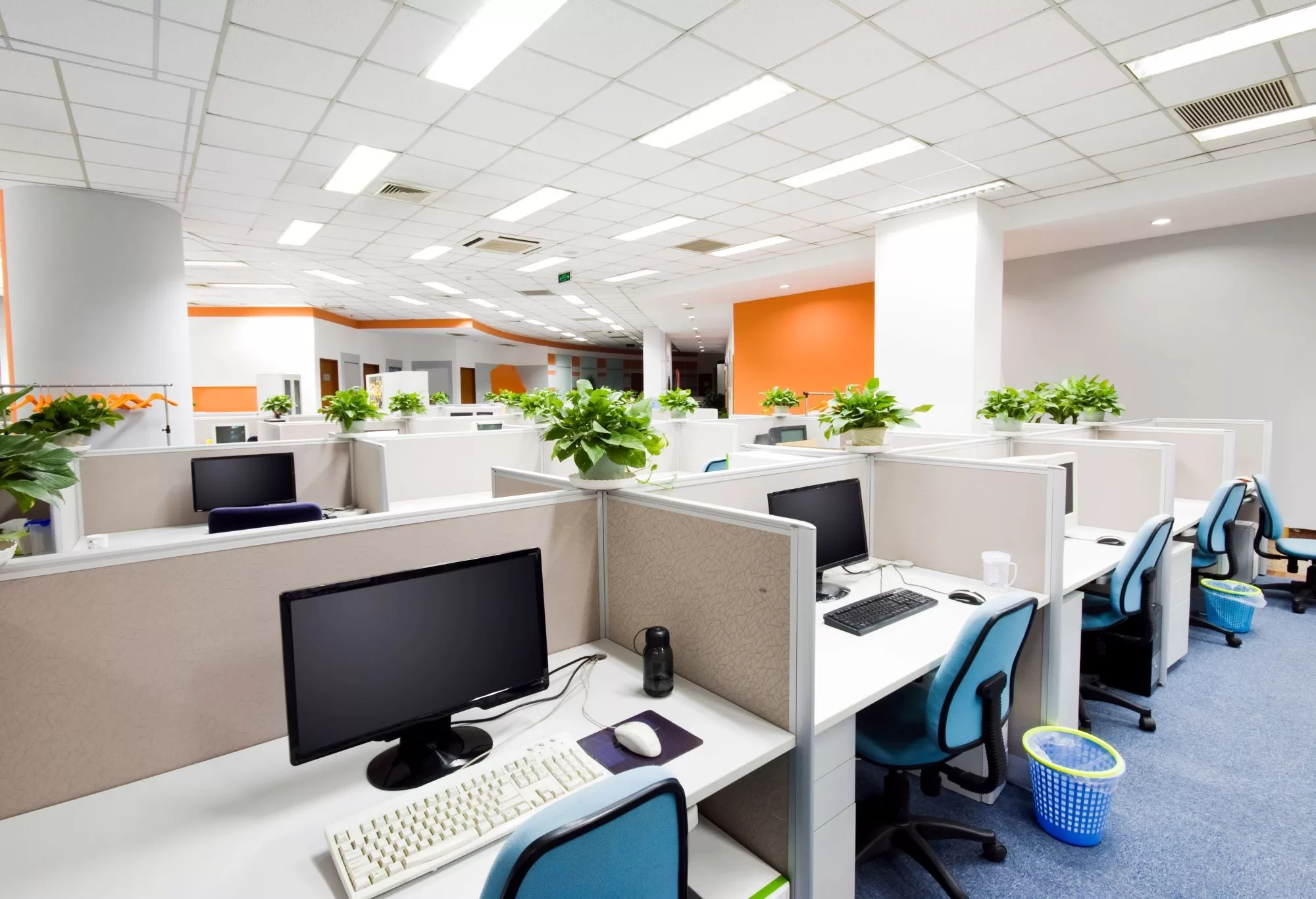In the fast-paced world of building management, efficiency, cost-effectiveness, and streamlined operations are paramount. To achieve these goals, many organizations are turning to Computerized Maintenance Management System (CMMS) software. CMMS software offers a comprehensive solution that revolutionizes the way large buildings are managed and maintained.

Gone are the days of manual maintenance tracking, scattered data, and reactive approaches. CMMS software brings a host of benefits, empowering facility managers to proactively manage assets, streamline maintenance operations, optimize resource allocation, enhance communication, ensure compliance, and much more.
In this blog, we will explore the numerous advantages that CMMS software offers for large building management.
Understanding CMMS Software: Things You Need to Know
A Computerized Maintenance Management System (CMMS) is a digital solution designed to streamline and optimize maintenance operations in various industries.
The goal of CMMS software is to effectively manage assets, streamline maintenance workflows, and improve overall operational efficiency. It serves as a centralized hub for managing maintenance activities, assets, work orders, and data related to building management.
Features of CMMS Software
There are many useful features of CMMS software that can make maintenance management easy. Here are some features of CMMS:
- Work order management: With CMMS software, you can create, assign, and track work orders for maintenance tasks and repairs.
- Asset management: Maintain a comprehensive database of assets, including equipment, machinery, and facilities. You are provided with details, such as specifications, maintenance history, and location.
- Preventive maintenance scheduling: You can plan and schedule routine maintenance tasks to avoid breakdowns and extend the lifespan of assets in your company.
- Inventory management: Track and manage spare parts, supplies, and materials needed for maintenance and repairs with the use of CMMS software.
- Equipment history and documentation: You can maintain a detailed record of maintenance activities, repairs, and inspections performed on each asset.
- Mobile accessibility: Access the CMMS software through mobile devices, allowing technicians to update work orders and access asset information on the go.
- Reporting and analytics: Generate reports and analytics to gain insights into maintenance performance, asset utilization, costs, and other key metrics.
Benefits of CMMS Software for Large Building Management
Large building management comes with its own set of unique challenges, from managing complex infrastructure to ensuring efficient maintenance operations. CMMS (Computerized Maintenance Management System) software offers a range of benefits specifically tailored to address these challenges.
Here are ways CMMS software can significantly improve building management:
1. Streamlined Work Order Management
CMMS software provides a centralized platform for creating, assigning, and tracking work orders. This eliminates manual paperwork, reduces the risk of miscommunication, and ensures that maintenance tasks are efficiently managed and completed on time.
Maintenance technicians can access work orders on their mobile devices, enabling real-time updates and smoother collaboration between team members.
Read Also:
2. Preventive Maintenance and Equipment Optimization
One of the most significant benefits of CMMS software is its ability to schedule and automate preventive maintenance tasks. By implementing a proactive maintenance strategy, organizations can prevent unexpected equipment failures, reduce downtime, and extend the lifespan of assets.
It sends automated reminders for routine inspections and maintenance, ensuring that equipment is properly serviced and maximizing its operational efficiency. This way, workers won’t miss the scheduled maintenance that can delay their production.
3. Asset Management and Tracking
This kind of digital transformation serves as a comprehensive database for managing assets in large buildings. It allows organizations to track assets, including equipment, facilities, and infrastructure, along with their maintenance history and documentation.
This centralized asset management system enables better planning and decision-making for repairs, replacements, and upgrades. By understanding the condition and performance of assets, facility managers can allocate resources effectively, optimize maintenance schedules, and minimize costs.
4. Efficient Inventory Management
CMMS software includes inventory management capabilities, enabling organizations to track and manage spare parts and supplies. It helps maintain accurate inventory levels, ensures timely reordering, and prevents stockouts or excess inventory.
Efficient inventory management reduces maintenance downtime by ensuring that the necessary parts are readily available when needed, optimizing maintenance operations, and minimizing costs associated with inventory management.
5. Real-time Monitoring and Reporting
This software enables real-time monitoring of maintenance activities, asset performance, and key performance indicators (KPIs). It provides dashboards and reports that offer insights into maintenance trends, equipment reliability, and resource utilization.
Facility managers can access up-to-date data, identify areas for improvement, and make data-driven decisions to enhance operational efficiency and reduce costs.
6. Enhanced Compliance and Safety
CMMS maintenance software helps organizations comply with safety regulations and industry standards. It allows for documentation of inspections, maintenance records, and safety checks, ensuring that all necessary protocols are followed.
This proactive approach to compliance minimizes the risk of accidents, improves occupant safety, and protects the organization from potential liabilities.
7. Improved Communication and Collaboration
CMMS software facilitates communication and collaboration among various stakeholders involved in building management. It provides a platform for technicians, managers, and contractors to communicate, share updates, and address maintenance issues promptly.
This transparent and streamlined communication process enhances efficiency, minimizes response times, and improves overall collaboration within the maintenance team.
8. Cost Savings and Return on Investment (ROI)
Through intelligent monitoring, organizations can achieve significant cost savings and improve their ROI. Proactive maintenance practices reduce the risk of costly equipment failures, minimize unplanned downtime, and extend the lifespan of assets.
Efficient resource allocation and inventory management prevent unnecessary expenses. Additionally, it helps organizations make data-driven decisions, optimize maintenance schedules, and reduce overall operating costs.
Choosing the Right CMMS Solution for Your Building Management Needs
Choosing the right CMMS solution for your building management needs is crucial for streamlining maintenance operations and improving overall efficiency.
The following are some key factors to consider when selecting a CMMS solution:
- Maintenance Requirements: Assess your building management requirements and determine what specific maintenance tasks need to be addressed.
- Consider factors such as preventive maintenance, work order management, asset tracking, inventory management, and reporting capabilities.
- Identify the features and functionalities that are essential for your building management operations.
- Scalability: Consider the scalability of the CMMS solution.
- Determine whether it can accommodate the size and complexity of your building portfolio.
- If you have multiple buildings or plan to expand your operations in the future, choose a CMMS that can scale accordingly to meet your evolving needs.
- User-Friendliness: Evaluate the user interface and ease of use of the CMMS solution. The system should be intuitive and user-friendly, allowing maintenance staff and other users to easily navigate and perform tasks without extensive training.
- Look for a solution with a clean and organized interface that supports quick access to essential information.
- Mobile Compatibility: Check if the CMMS solution offers mobile compatibility. Mobile access enables technicians to access work orders, update maintenance records, and access important data while on the go. This enhances the efficiency and responsiveness of your maintenance team.
- Integration Capabilities: Determine whether the CMMS solution can integrate with other software and systems used in your building management operations. Integration with systems like accounting software, building automation systems, or IoT devices can streamline data exchange and improve the overall effectiveness of your maintenance processes.
- Reporting and Analytics: Consider the reporting and analytics capabilities of the CMMS solution. Robust reporting features enable you to track key performance indicators, monitor maintenance trends, and make data-driven decisions.
- Look for customizable reports and analytics dashboards that provide meaningful insights into your building management operations.
- Vendor Support and Training: Evaluate the support and training provided by the CMMS vendor.
- Determine if they offer comprehensive training materials, online resources, and responsive customer support to assist you with system implementation and ongoing maintenance.
- Look for a reliable vendor that can provide timely support and be available to address any technical issues or questions.
- Security and Data Protection: Ensure that the CMMS solution provides robust security measures to protect your sensitive data. It should include features such as data encryption, user access controls, and regular backups.
- Verify if the vendor complies with industry standards and regulations regarding data security and privacy.
- User Reviews and References: Research user reviews and seek references from other organizations that have implemented the CMMS solution. Real-world experiences can provide valuable insights into the system’s performance, reliability, and vendor support.
Final Words
Implementing CMMS software for large building management brings numerous benefits and efficiencies. By streamlining work order management, automating preventive maintenance, optimizing asset management, improving communication, and enhancing compliance, organizations can achieve greater operational efficiency, reduce costs, and ensure seamless building operations.
The best technical practices mentioned can ensure successful implementation and ongoing utilization of CMMS software, leading to improved maintenance practices and long-term sustainability. With CMMS software, large building management becomes more proactive, data-driven, and effective, resulting in improved occupant satisfaction and optimized resource utilization.









